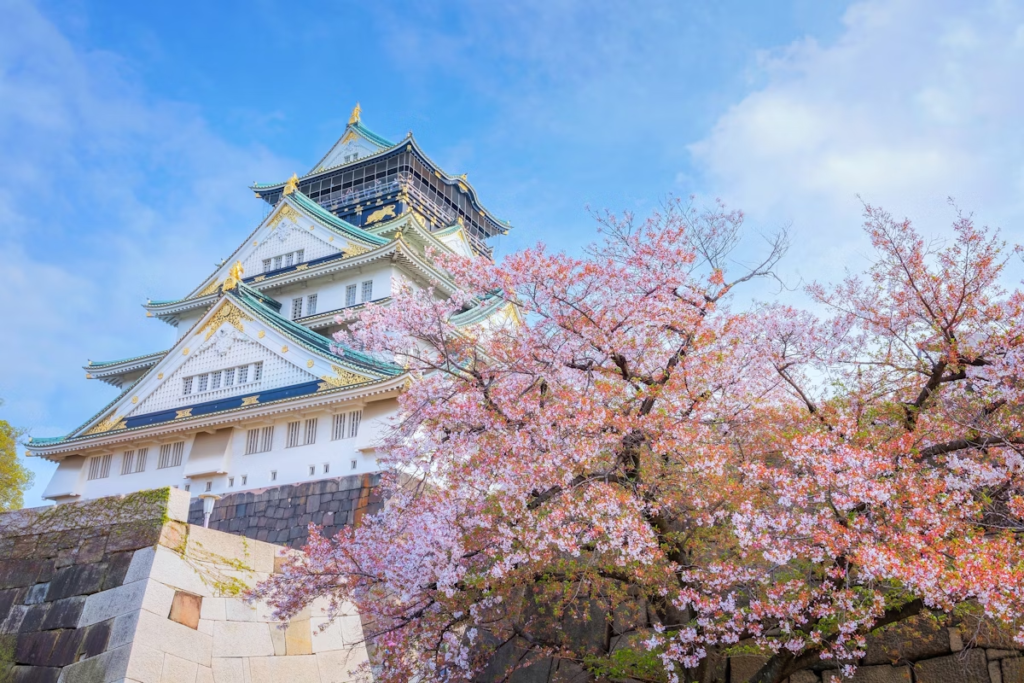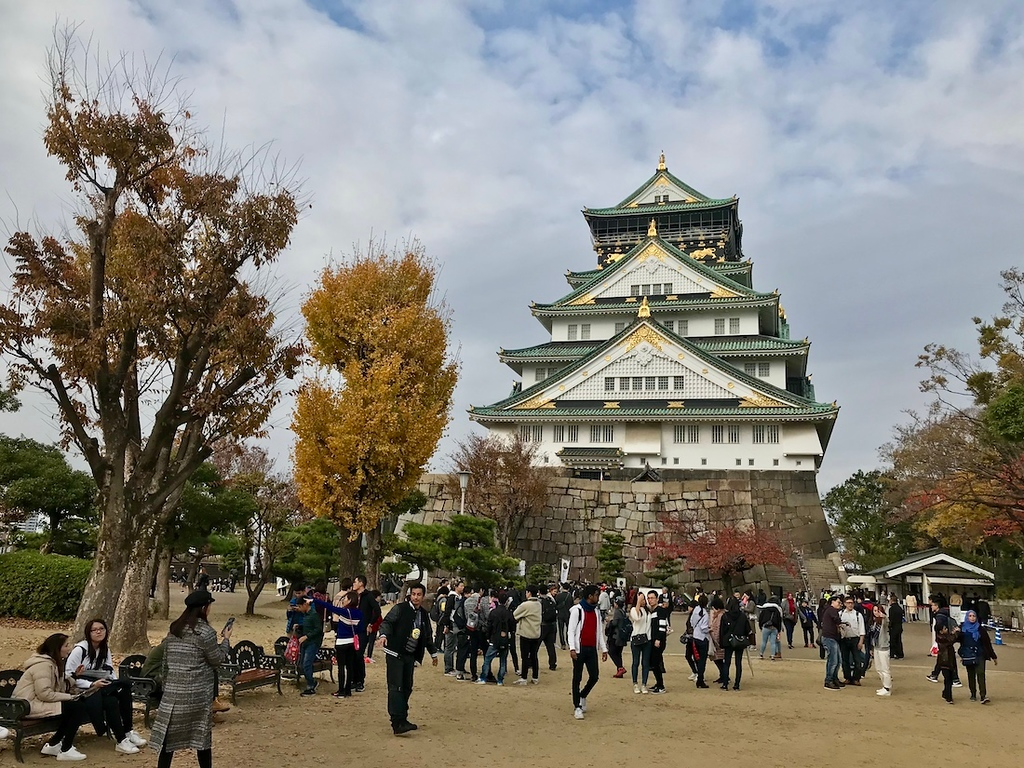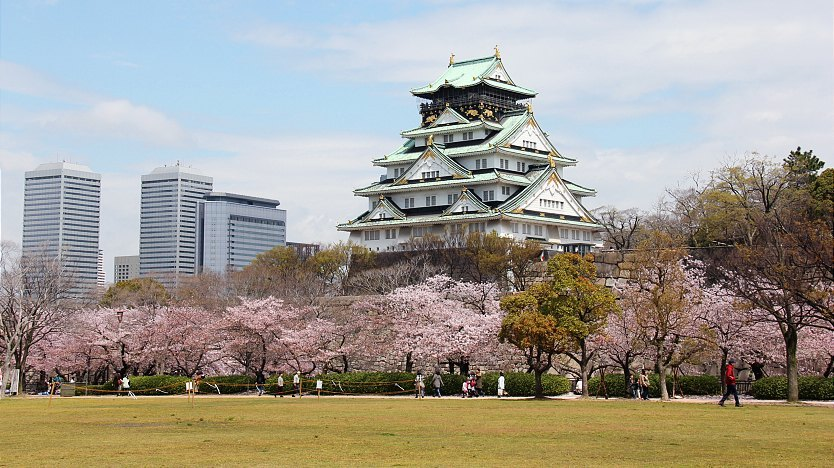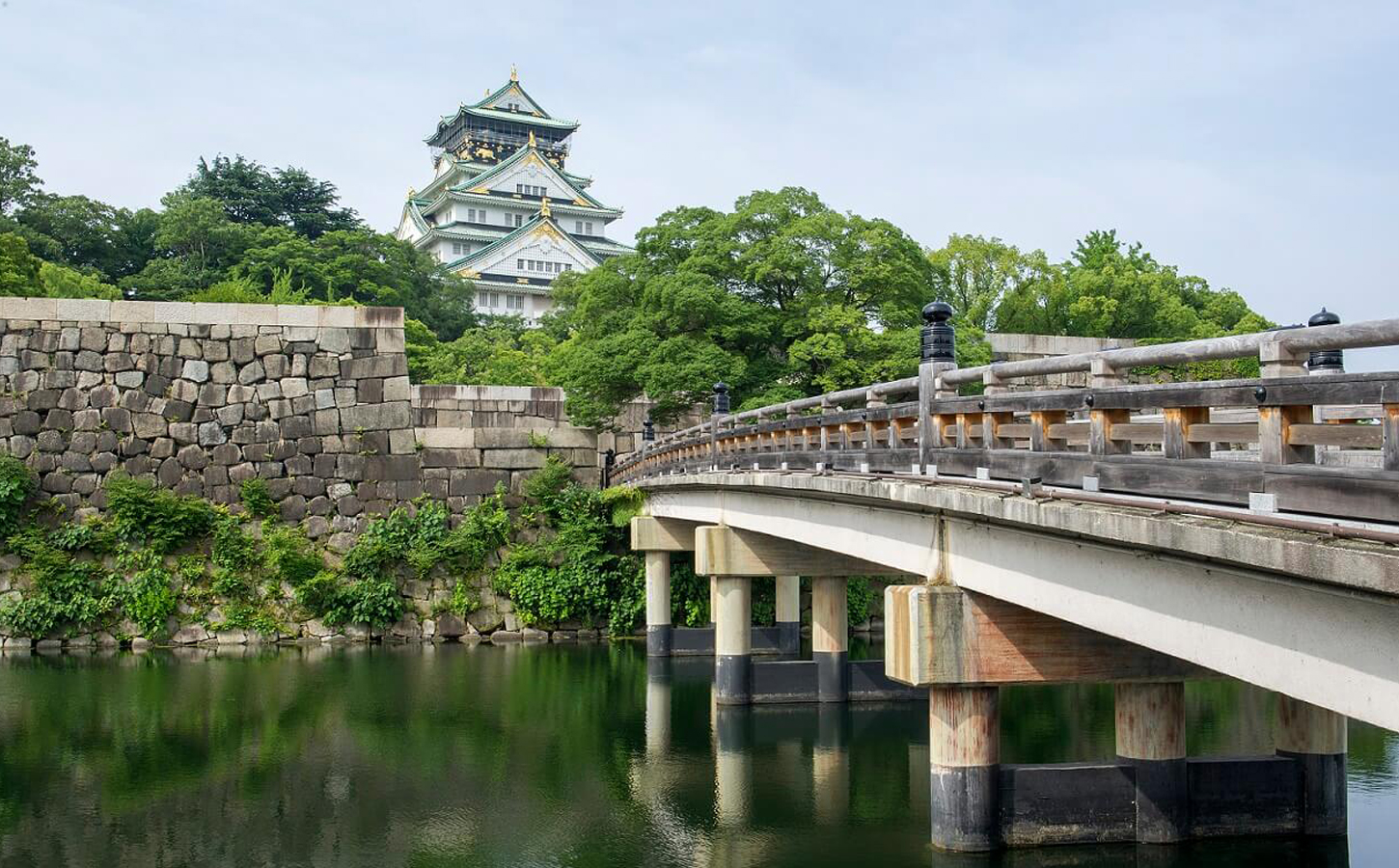Osaka Castle stands as one of Japan’s most iconic landmarks, representing a remarkable blend of cultural, historical, and architectural significance. Located in the heart of Osaka, Japan’s second-largest city, Osaka Castle has witnessed centuries of warfare, political shifts, and periods of peace, becoming a symbol of resilience and transformation.
As a marvel of ancient engineering, the castle offers visitors a glimpse into Japan’s feudal past and its continuous evolution into a modern nation.
The Historical Context: Origins and Construction
Osaka Castle was originally constructed in 1583 by Toyotomi Hideyoshi, a prominent daimyo and one of Japan’s greatest unifiers. Hideyoshi envisioned Osaka Castle as the center of his power, reflecting both his military strength and political ambition. His decision to build the castle on the site of the Ishiyama Hongan-ji temple, which had been destroyed in a previous conflict, was a strategic one.
The temple’s location was ideal, situated on a natural elevated plateau surrounded by two rivers and offering a commanding view of the surrounding plains. The castle was intended to be the largest and most impressive in Japan, and it succeeded in that regard, serving not only as a fortress but also as a symbol of the Toyotomi clan’s authority.
Read : Osaka Castle: A Timeless Icon of Japan’s Rich History
The construction of Osaka Castle was a monumental task, requiring immense labor and resources. Stone was transported from distant quarries, with some stones weighing as much as 130 tons. These stones were used to create the massive walls and moats that surrounded the castle, offering protection from enemy attacks.
Read : Cherry Blossom of Japan vs. Neelakurinji Blossom of India: A Tale of Two Unique Blooms
Hideyoshi spared no expense in the construction, using gold leaf to decorate the castle’s towers and walls, making it one of the most visually stunning castles in the country. The golden ornamentation symbolized Hideyoshi’s wealth and power, and it also reflected his desire to solidify his legacy in Japanese history.
The Fall of the Toyotomi Clan and the Siege of Osaka
Despite its grandeur, Osaka Castle’s history was marred by conflict, particularly the siege that marked the end of the Toyotomi clan’s rule. Following Hideyoshi’s death in 1598, power struggles erupted among Japan’s feudal lords.
Tokugawa Ieyasu, who would later establish the Tokugawa Shogunate, sought to eliminate the remaining Toyotomi influence. The castle became the site of two significant military campaigns: the Winter Siege of Osaka (1614) and the Summer Siege of Osaka (1615). These battles were pivotal in Japan’s history as they marked the final consolidation of power by the Tokugawa clan.

During the Winter Siege, Tokugawa forces attempted to breach Osaka Castle but were initially unsuccessful due to the strong defensive fortifications. The castle’s massive stone walls and deep moats made it nearly impenetrable, but the siege eventually ended with a negotiated truce.
However, the following year, the Summer Siege saw the castle fall after fierce fighting, and the Toyotomi clan was decisively defeated. The castle was burned to the ground, and with its destruction, the era of the Toyotomi clan came to an end.
Reconstruction Under the Tokugawa Shogunate
After the fall of the Toyotomi clan, Tokugawa Ieyasu ordered the reconstruction of Osaka Castle in the 1620s, transforming it into a Tokugawa stronghold. The new structure was built on the same site, but it featured even stronger defensive measures, including larger stone walls and wider moats.
While the castle was no longer a political center, it remained a symbol of Tokugawa dominance and served as a regional administrative hub for the Osaka area.
The reconstruction of the castle marked a shift in its role, from being a militaristic symbol of the Toyotomi clan’s ambition to a more functional stronghold under Tokugawa rule. The castle also served as a military base during periods of unrest, including the uprisings of the Edo period.
Although it lost some of its former splendor, Osaka Castle continued to play a significant role in Japan’s feudal system until the fall of the Tokugawa Shogunate in the 19th century.
Destruction and Modern Rebuilding
The Meiji Restoration in 1868 brought significant political changes to Japan, as the country transitioned from a feudal system to a more modern imperial government. Osaka Castle, like many other feudal structures, was largely abandoned during this period.
Parts of the castle were destroyed, and the grounds were repurposed for military use by the Imperial Japanese Army. In 1931, however, a decision was made to restore the castle to its former glory, and the main tower was reconstructed using reinforced concrete. This restoration project was part of a larger effort to preserve Japan’s cultural heritage during a time of rapid modernization.

The castle suffered further damage during World War II, particularly during air raids on Osaka in 1945. The surrounding areas were heavily bombed, but the castle’s main tower survived the attacks. In the postwar era, Osaka Castle became a symbol of Japan’s resilience and recovery.
In the 1990s, another major restoration project was undertaken to further enhance the structure and ensure its preservation for future generations. The interior of the castle was transformed into a modern museum, showcasing exhibits on the history of Osaka and the castle itself, including artifacts from the Toyotomi and Tokugawa periods.
Architecture and Design: A Feudal Masterpiece
Osaka Castle’s architecture is a testament to the ingenuity and craftsmanship of Japan’s feudal era. The castle’s main tower, or donjon, rises five stories from the exterior but contains eight floors inside.
The exterior is adorned with golden details, including the iconic golden shachihoko, a mythical fish-like creature said to protect the castle from fire. These embellishments reflect the grandeur and prestige of the castle, while the stone walls and moats demonstrate the practical considerations of defense.
One of the most remarkable features of Osaka Castle is the sheer size of the stones used in its construction. The walls, which rise to a height of up to 30 meters in some places, are made of massive stones that were carefully fitted together without mortar.
These walls were designed to withstand both attacks and natural disasters such as earthquakes. The largest stone in the castle, known as the Tako-ishi, is over 6 meters tall and weighs more than 100 tons.
The layout of Osaka Castle follows the typical design of Japanese castles, with a central keep surrounded by multiple layers of defenses. The castle is encircled by two moats, an inner moat and an outer moat, which provided an additional layer of protection against invaders.
The main gate, Otemon Gate, was heavily fortified and could only be accessed by crossing a narrow bridge, making it difficult for attackers to approach.
The Castle Grounds: Gardens and Scenic Views
In addition to its impressive architecture, Osaka Castle is known for its beautiful grounds, which cover over 60,000 square meters. The castle park is a popular destination for both locals and tourists, offering a peaceful retreat in the heart of the bustling city.
The park is especially famous for its cherry blossoms, which bloom in the spring and attract thousands of visitors during the hanami (flower viewing) season. The sight of the castle tower framed by cherry blossoms is one of the most iconic images of Osaka and is often featured in postcards and travel guides.

The castle grounds also include several gardens, such as the Nishinomaru Garden, which offers stunning views of the castle tower and the surrounding landscape. The garden is home to over 600 cherry trees, as well as traditional Japanese landscaping features such as stone lanterns and a teahouse.
The tranquil atmosphere of the gardens contrasts with the imposing presence of the castle, providing visitors with a sense of the balance between nature and architecture that is central to Japanese design.
From the observation deck at the top of the main tower, visitors can enjoy panoramic views of Osaka, including the city skyline and the surrounding mountains. This vantage point not only offers a breathtaking perspective of the modern city but also serves as a reminder of the castle’s historical role as a strategic fortress.
Cultural Significance and Legacy
Osaka Castle holds a special place in Japanese culture, not only as a historical site but also as a symbol of the country’s resilience and adaptability. The castle has survived multiple periods of destruction and reconstruction, each time emerging as a stronger and more enduring symbol of Japan’s heritage.
It has played a role in some of the most significant events in Japanese history, including the unification of the country under Toyotomi Hideyoshi and the rise of the Tokugawa Shogunate.
In modern times, Osaka Castle serves as a cultural and educational center, offering visitors a chance to learn about Japan’s feudal past and its journey toward modernization. The museum inside the castle features a variety of exhibits, including armor, weapons, and artifacts from the castle’s history.
Visitors can also learn about the lives of the samurai and daimyo who once inhabited the castle, as well as the political and military strategies that shaped Japan’s history.
The castle also plays an important role in local culture, hosting a variety of events throughout the year. During the summer, the Osaka Castle Festival celebrates the history and culture of the region with traditional performances, music, and food.
The castle is also a popular venue for New Year’s celebrations, when visitors come to watch the first sunrise of the year from the castle grounds.
Osaka Castle in Popular Culture
Given its historical importance and striking appearance, Osaka Castle has become a popular subject in various forms of media, including films, television shows, and video games.
The castle’s iconic silhouette has been featured in numerous samurai films, and it has become a symbol of feudal Japan in popular culture. It has also appeared in video games such as “Samurai Warriors” and “Total War: Shogun,” where players can experience the castle’s role in Japan’s military history.
Additionally, Osaka Castle has become a popular tourist destination, drawing visitors from around the world who are eager to explore its rich history and stunning architecture. The castle’s central location in Osaka makes it easily accessible, and it is often included in itineraries for travelers exploring Japan’s Kansai region, which also includes Kyoto and Nara, two other historically significant cities.
Osaka Castle stands as a monument to Japan’s rich and tumultuous history, reflecting the ambition, power, and resilience of the people who built and rebuilt it over the centuries.

From its origins as Toyotomi Hideyoshi’s grand fortress to its role in the Tokugawa Shogunate and its modern incarnation as a cultural icon, the castle continues to captivate visitors with its architectural beauty and historical significance.
Today, Osaka Castle serves not only as a reminder of Japan’s feudal past but also as a symbol of the country’s ability to preserve and honor its heritage while embracing the future. As one of Japan’s most visited landmarks, Osaka Castle remains a testament to the enduring legacy of its builders and the historical events that shaped the nation.
Whether through its imposing walls, tranquil gardens, or fascinating museum exhibits, Osaka Castle offers a unique window into the history and culture of Japan.
let’s enjoy few years on earth with peace and happiness….✍🏼🙏

